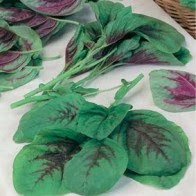
Hello Readers! Long time no contact! :-)
Well it's been 2 month since I last posted and with good reason. See the chart of my life's events below.
Sept 30th - Had to move in with in-laws as husband was out of work since Mid-July.
Oct/Nov - Working hard at my contract job so as not to loose it because it is our only income.
November - I am hired on Full Time and get Health Benefits, as we had been without them for about 18months.
Early December - Matt starts going to his Endocrinologist (Diabetes) and getting his blood sugar under better control.
Dec - Mid-Dec - Matt gets a job! Not a great job, but a job.
January - First month of Matt's job he is traveling and traveling for his job and sometimes coming home after working 20 hour days and only getting 5 hours sleep.
January 21st - Matt comes home from work around 6pm and is not acting "normal". He eats, laid down at 7pm because he didn't feel good and woke up 2 hours later talking like he was drunk, slurred words, unable to move, felt exhausted. I thought it was his Diabetes and gave him sugar to bring up his blood sugar. He eventually felt slightly better that night, but, never right and kept saying this doesn't feel like low blood sugar. The next day he stayed home from work and seemed fine.
January 23rd - Matt feels the same way again - we go to the hospital - come to find out that at age 41 he had a Stroke! He had a Stroke because his blood sugar had been out of control for about the last 18 months. Many diabetics have Strokes and Heart Attacks. We immediately go see my Neurologist, his Endo. Doc and a Family Doc. He is now on a baby aspirin a day and all the following tests he had came out fine (Echo for his heart, Doppler for his Carotid Arteries, 3rd Cat Scan of his head for blood flow testing). So we have no cause for the Stroke other than his Diabetes. They do call it America's Silent Killer.
February 11th - 3 weeks to the day of his Stroke, his Boss calls him in his office and says we are going to have to let you go as you have been seen answering emails on your personal cell phone. Oh wait....you mean the personal cell phone that contains my WORK email?! Bottom line is they wanted to fire him because he had a Stroke and he drives their vehicles for work and well "what if" he had another Stroke while he was driving their vehicle. HIGH RISK. In the State of TN there are no laws protecting the employee from such a dismissal. It took them 3 weeks, but, they tried to find a way to get rid of him. So he is now unemployed AGAIN.
We filed for unemployment if he gets it...it's a whopping $275/week. That is the maximum ANYONE can get for unemployment in the state of TN! Crazy! That won't even pay rent/mortgage.
Now you'd think that living with his parents would be a cost savings for us, but, because of this cold winter and their 1950's house that just leaks heat (I see $$$$ signs coming out the roof every time I drive home) we pay them about $550/mo in Utilities, then $150 for our storage unit and another $350 in gas because we live so far from my work, plus the car repairs I've needed. You do the Math...we are saving squat by living with them.
On top of all this, work is so stressful, I am having to take daily Xanax and biting my tongue daily as to not tell my boss off...my boss who wants me to become a manager so I can deal with the daily crap he is trying to deal with..and failing. NO THANK YOU! I am on a sinking ship. Working 50 hours a week, sometimes 60.
So between Hubs not working again, his being depressed because of all this, his Stroke, Nagging him to care for himself and his Diabetes so as to not have another Serious Stroke, Trying to get along with the inlaws, running constant numbers in my head trying to figure a way "out" of this whole situation - I am feeling hopeless. And Oh Yeah, we have to be outta here by May for when his Sister and Nephew move in...a whole other long story.
Many of my friends and family are having similar job/money/health issues. All I hear is bad news anymore. I really need a vacation...alas...I cannot afford one...
Oh well, what's new with you all? Tell me something good! :)
** I should mention my husband is fine after his Stroke - it was a "warning" Stroke, he did not loose any bodily functions**
















